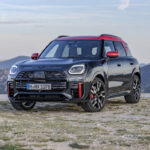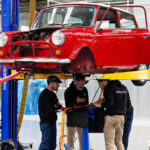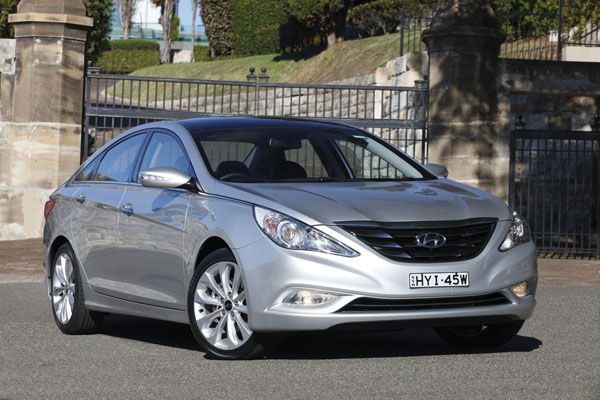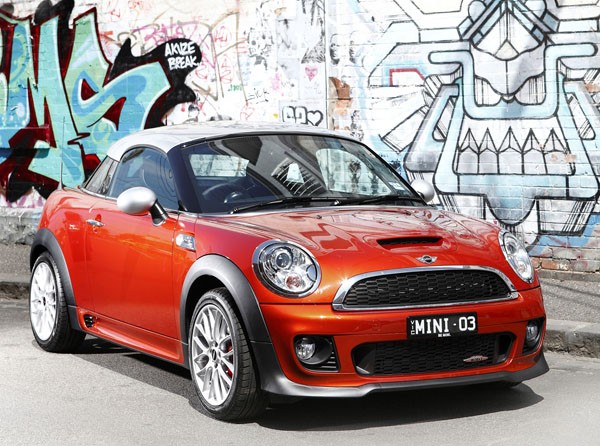
Despite sceptics having serious doubts about the new Mini when it was launched in the UK and Europe 2001, it has been a big success. It arrived downunder in March 2002 and local car enthusiasts immediately joined in the fun.
Fun, which has continued to this day, has been further enlivened by the fact that an all-new model is due this year. Meaning that quite a few older Minis will appear on the used-car scene as fashion conscious owners want to trade up. If there is a flood of used cars on the market prices may come down – no promises, though…
The new Mini which, somewhat oddly, is now controlled by BMW, has become a fashion statement as much as a motor car. It simply cries out for customisation. Some of the prices paid are staggering, with the most expensive Mini in this country having price tags in excess of $100,000.

Driving enjoyment is another important factor in Mini’s success. It has steering that’s almost kart-like in its response, in fact it’s almost too quick and first time drivers can get taken surprise at times.
On the downside, the ride is fairly harsh and may prove too much for some occupants when it’s cruising on rough Aussie bush roads.
The lower cost model, the Mini One, isn’t imported, rather the Australian range begins with the Mini Cooper. The Cooper S is the hotshot, having its 1.6-litre engine supercharged prior to the introduction of the new model in March 2007, and turbocharged from then onwards.
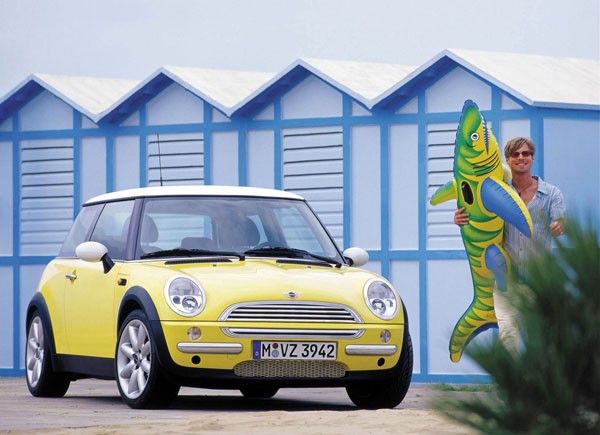
Topping out the Mini range is the Cooper S with the works – the John Cooper Works that is. The Cooper company specialises in improving Minis, both the original models and the new 21st century machines. The early JCW models use an Eaton supercharger in place of the Rootes blower fitted to the standard Mini Cooper S.
Turbo engines in the later JCWs rely on greater boost pressure, with overboost on offer if you want to get very serious. We really like the supercharged engine, because its torque comes in virtually instantly, whereas the turbo unit inevitably has a slight lag before getting wound right up.
Also, the supercharged engine has a glorious shriek when you get stuck into it, a sound that’s loved by keen drivers with memories of supercharged racing cars.
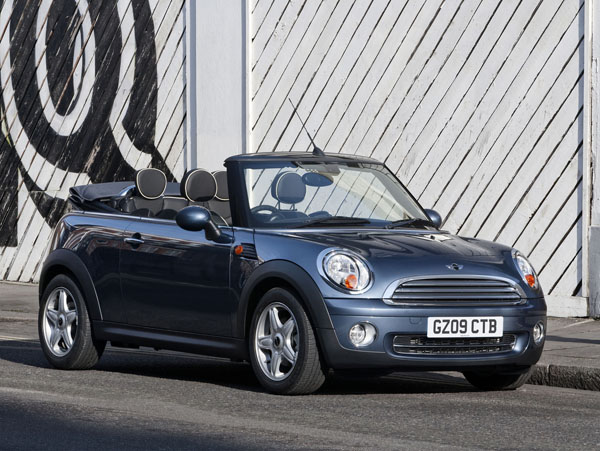
After the initial success body types mushroomed: a Mini cabriolet / convertible was launched in 2004, it can it be used to make the Mini not only an open convertible, but also as a closed car with an open sunroof.
The Mini Clubman is an odd station wagon, with two doors on one side but only one on the other. As it’s setup for Europe the extra door to gain access to the back seat is on the wrong side for Australia, that is the kids have to walk out into the traffic to reach the door.
In January 2012 a coupe and roadster were added to the Mini range.
The new Mini network is well established in Australia. Almost all dealers are in suburban areas, which could lead to hassles if you’re unlucky enough to strike a problem in remote country.
Being part of the BMW organisation gives the Mini major advantages in technical backup.
Spare parts and servicing charges aren’t unreasonable for a car in this class, meaning they are higher than for a typical small car. While it’s possible to do some of your own routine servicing, we suggest you stick with the professionals for all but the most minor tasks, and don’t even think of touching areas that can compromise safety.
Most new Minis belong to keen owners and are serviced by the book. You usually have to pay extra, but we reckon it’s money well spent.
Insurance costs are quite high, even more so for one of the ‘charged’ engines. Shop around for insurance, especially if you are young and/or inexperienced, but make sure you do an apple-to-apple comparison.
WHAT TO LOOK FOR
Be very wary of a Mini that has been fanged during track days or at a drag strip. Look for a roll cage, lowered suspension and additional instruments. Keep in mind they may have been put back to standard before going on sale.
Check for crash damage, or previous smash repairs. Mismatched paint colours from one panel to another are a good clue – do the inspection in strong light. Also look for ripples in the panels, most easily seen when viewed end on. Tiny drops of paint in unpainted areas like lights, windows and badges are another clue to a respray.
Look over the interior for signs of damage or wear and tear. Don’t forget to check the boot.
Check for signs of water stains in a cabriolet, ask to have the carpets removed to check the floor under them. Dry carpets may be new units, so don’t necessarily mean the car hasn’t been caught in the rain…
Make sure the engine starts easily and idles smoothly. Watch for a puff of smoke from the exhaust when it first kicks over and again when it’s accelerated hard during your road test.
Be sure all gear changes are light and quiet. The continuously variable transmission (CVT) fitted on early automatics creates a different engine sound to the norm. A bit of a frantic noise that not everyone likes. If you feel there are problems get a specialist to check it out.
CAR BUYING TIP
If looking at any car that attracts enthusiasts it’s smart to talk to car club members. They are a source of huge amounts of information and may even know specific cars you’re considering.




